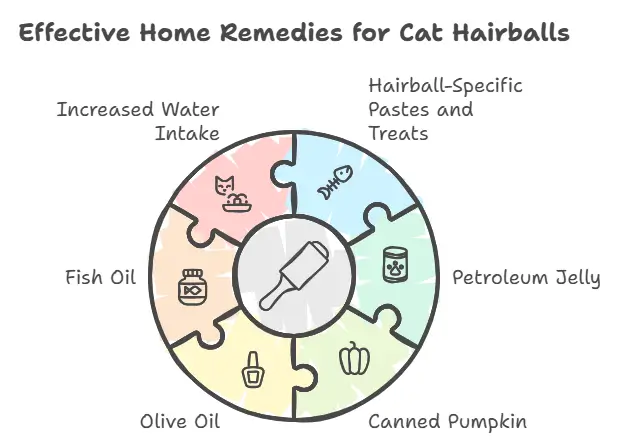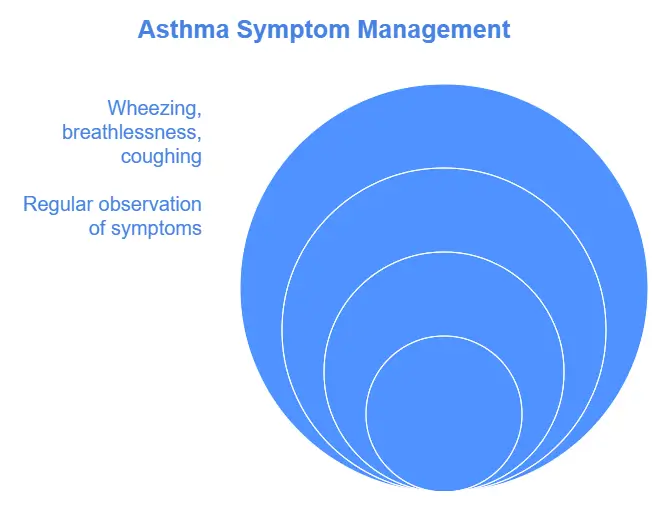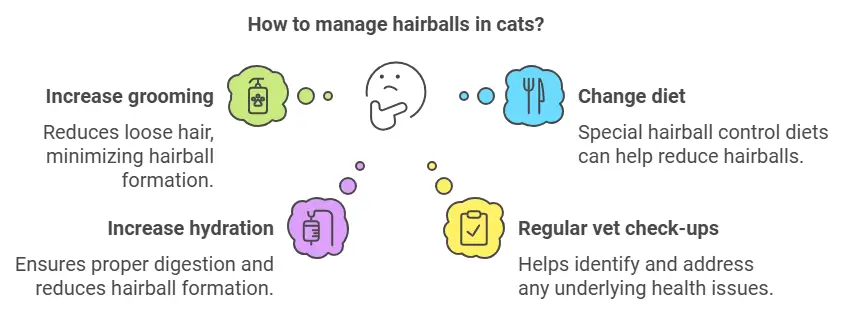
This document serves as a comprehensive guide for cat owners dealing with the common issue of hairballs. It outlines effective home remedies, identifies warning signs of serious complications, explains the veterinary process for potential blockages, differentiates between hairball symptoms and asthma, and offers preventive grooming tips. By following these guidelines, cat owners can help their furry friends manage and prevent hairballs effectively.

I. Using Home Remedies

There are several home remedies that can assist in managing cat hairballs. Here are six effective options:

- Hairball-Specific Pastes and Treats: These products are designed to help lubricate the digestive tract, making it easier for hairballs to pass.
- Petroleum Jelly: A small amount of petroleum jelly can be given to your cat to help with lubrication.
- Canned Pumpkin: This pantry staple is high in fiber and can aid in digestion, helping hairballs to move through the system.
- Olive Oil: A teaspoon of olive oil can also help lubricate the digestive tract.
- Fish Oil: Rich in omega-3 fatty acids, fish oil can promote a healthy coat and reduce shedding, which may help decrease hairballs.
- Increased Water Intake: Ensuring your cat stays hydrated can help with digestion and the passage of hairballs.

II. Watching for More Serious Symptoms

While hairballs are common, they can sometimes lead to more serious issues. Be vigilant for these warning signs:

- Loss of Appetite: If your cat is not eating, it may indicate a blockage.
- Repeated Unproductive Hacking: If your cat is trying to cough up a hairball but is unsuccessful, it could be a sign of a blockage.
- Changes in Stomach Firmness or Energy Levels: A bloated stomach or lethargy can indicate a serious problem that requires immediate veterinary attention

III. Taking Your Cat to the Vet

If you suspect a hairball blockage, it is crucial to take your cat to the vet. The process typically involves:

- Initial Physical Examination: The vet will assess your cat’s overall health and check for signs of distress.
- Diagnostic Tests: Blood work and imaging (like X-rays or ultrasounds) may be conducted to determine the extent of the blockage.
- Possible Treatment: Depending on the severity, your cat may need to stay at the clinic for observation, laxative treatment, or in extreme cases, surgery

IV. Watching for Asthma Symptoms

It’s important to differentiate between hairball symptoms and those of feline asthma. Key distinctions include

- Hacking Position: Cats with asthma may adopt a different posture when hacking, often crouching or sitting upright.
- Wheezing Sounds: Listen for any wheezing or labored breathing, which are signs of asthma rather than hairballs.
- Difficulty Breathing: If your cat shows signs of respiratory distress, it is crucial to seek veterinary care immediately.

V. Preventing Hairballs

Prevention is key to managing hairballs. Here are some proactive grooming practices:

- Daily Grooming: For cats prone to hairballs, daily brushing can significantly reduce shedding and hair ingestion.
- Combing and Brushing Frequencies: Long-haired cats may require more frequent grooming compared to short-haired breeds.
- Positive Reinforcement: Make grooming a positive experience by rewarding your cat with treats and affection, helping them to associate grooming with good feelings.

By implementing these strategies, cat owners can help their pets manage hairballs effectively and maintain their overall health.

Discover more from TEESHSH COOL
Subscribe to get the latest posts sent to your email.



